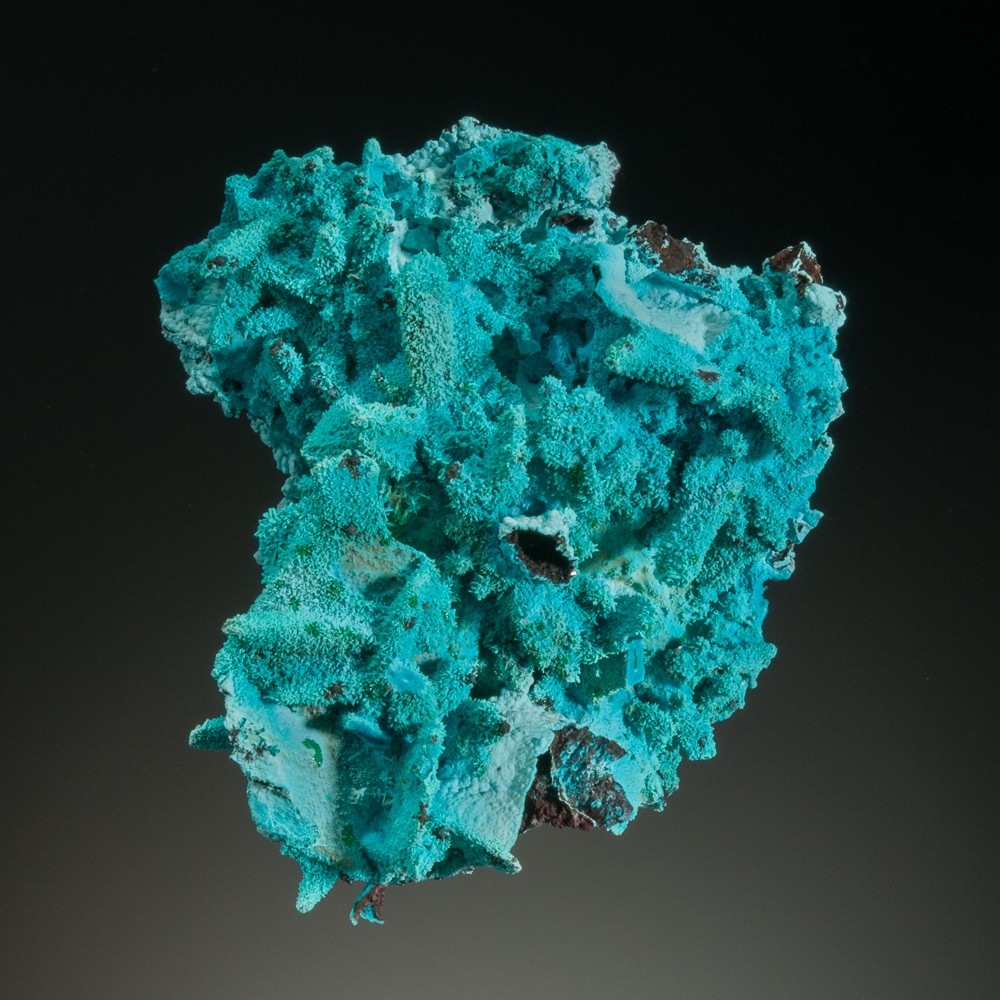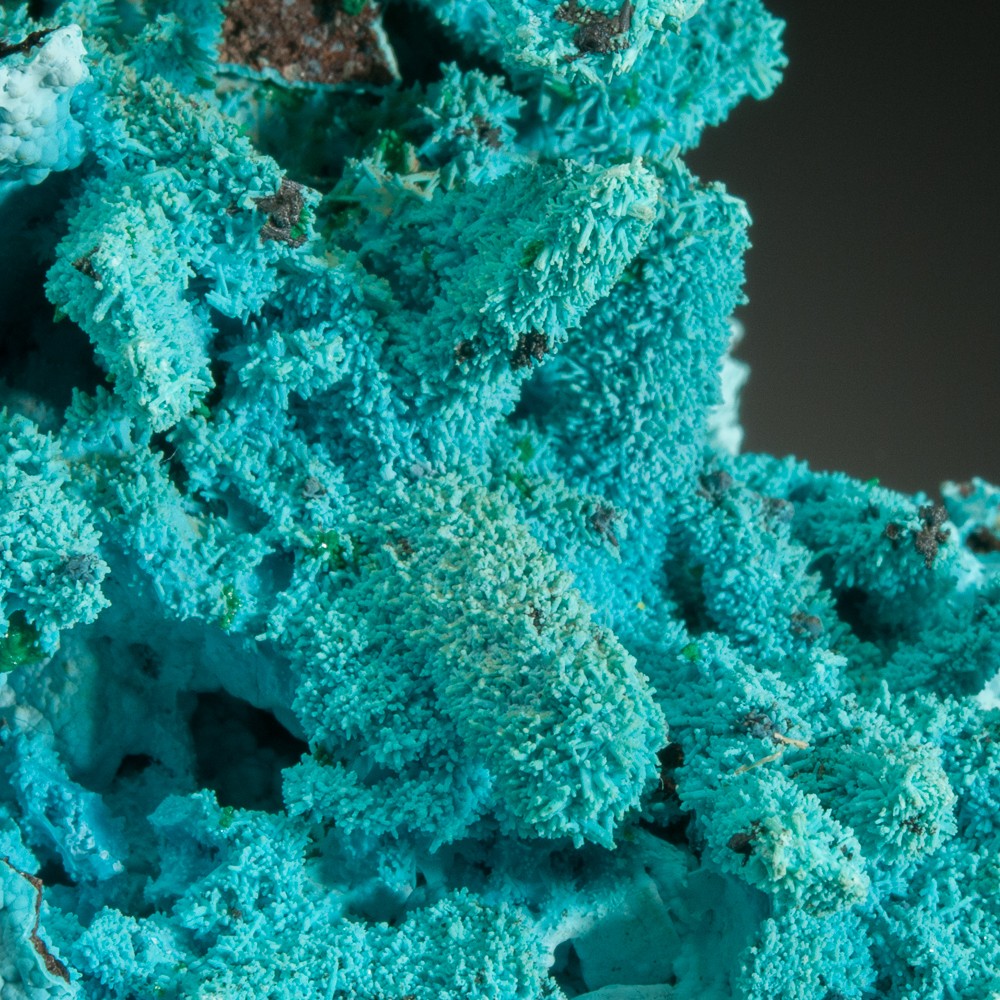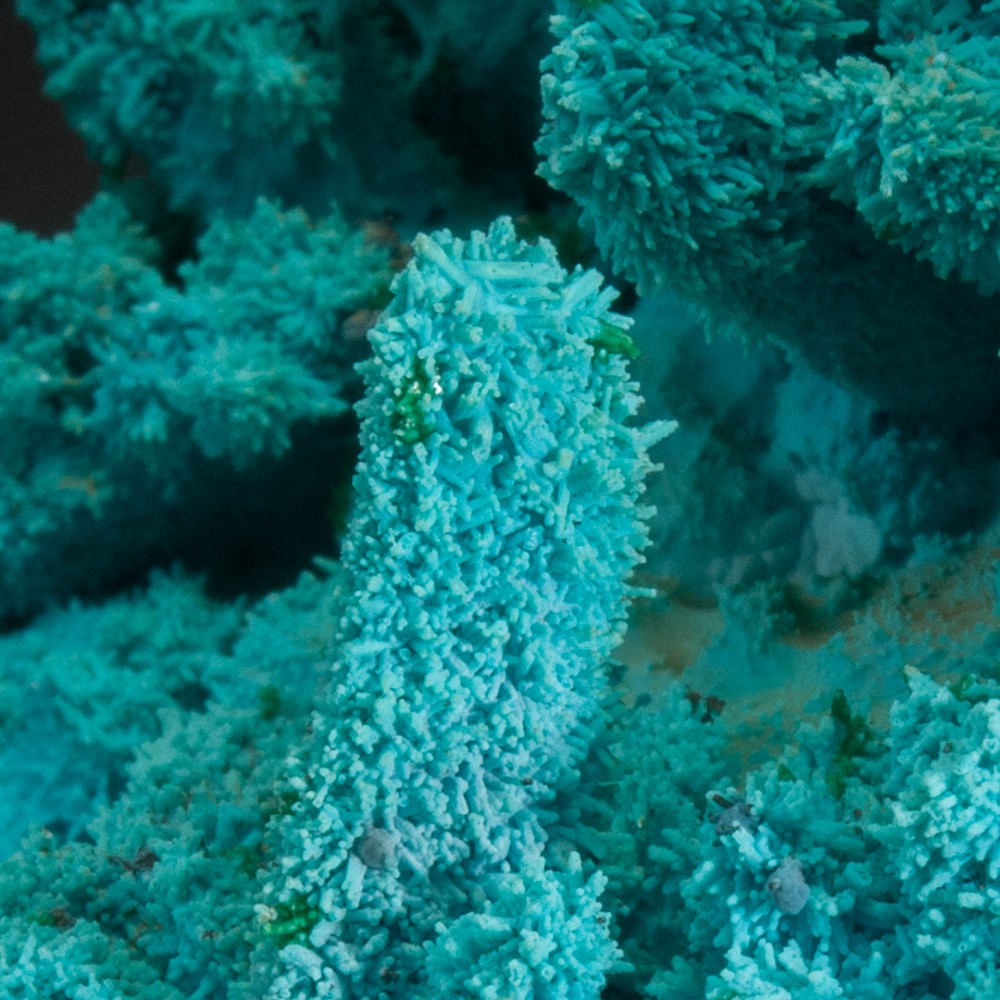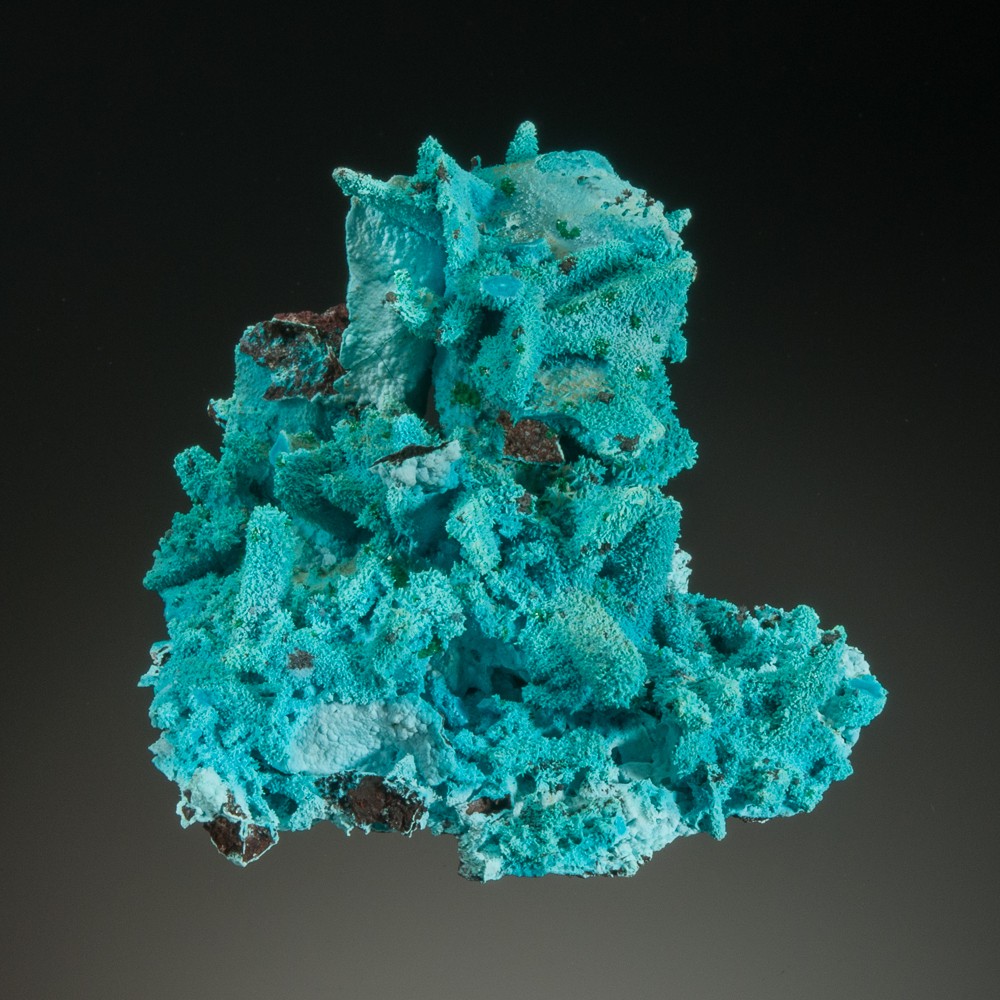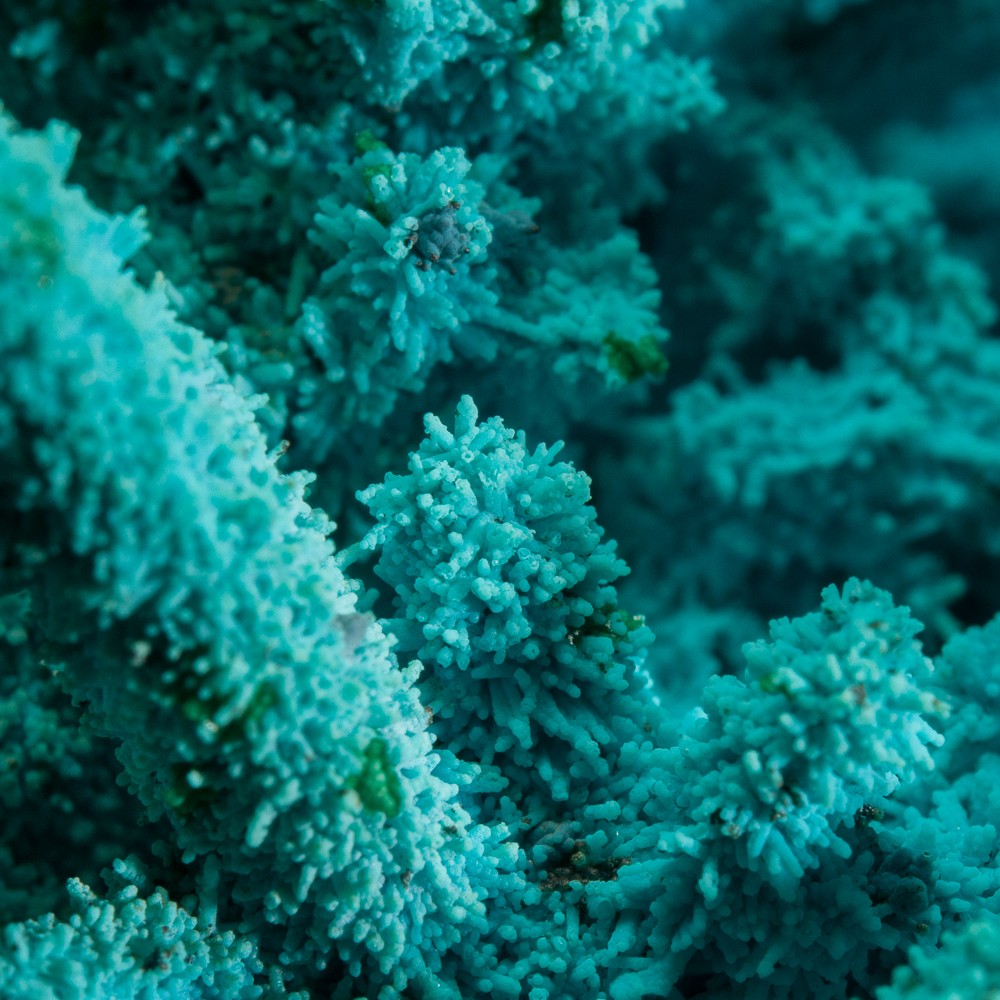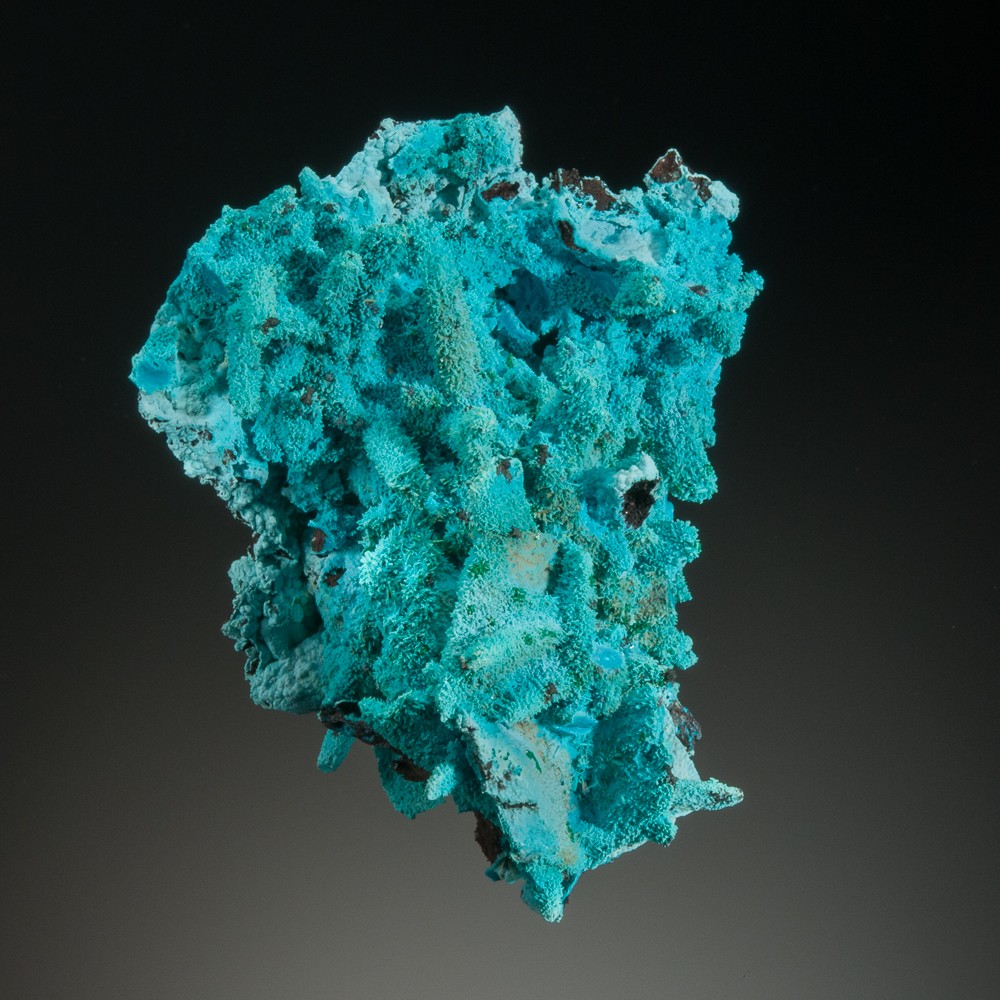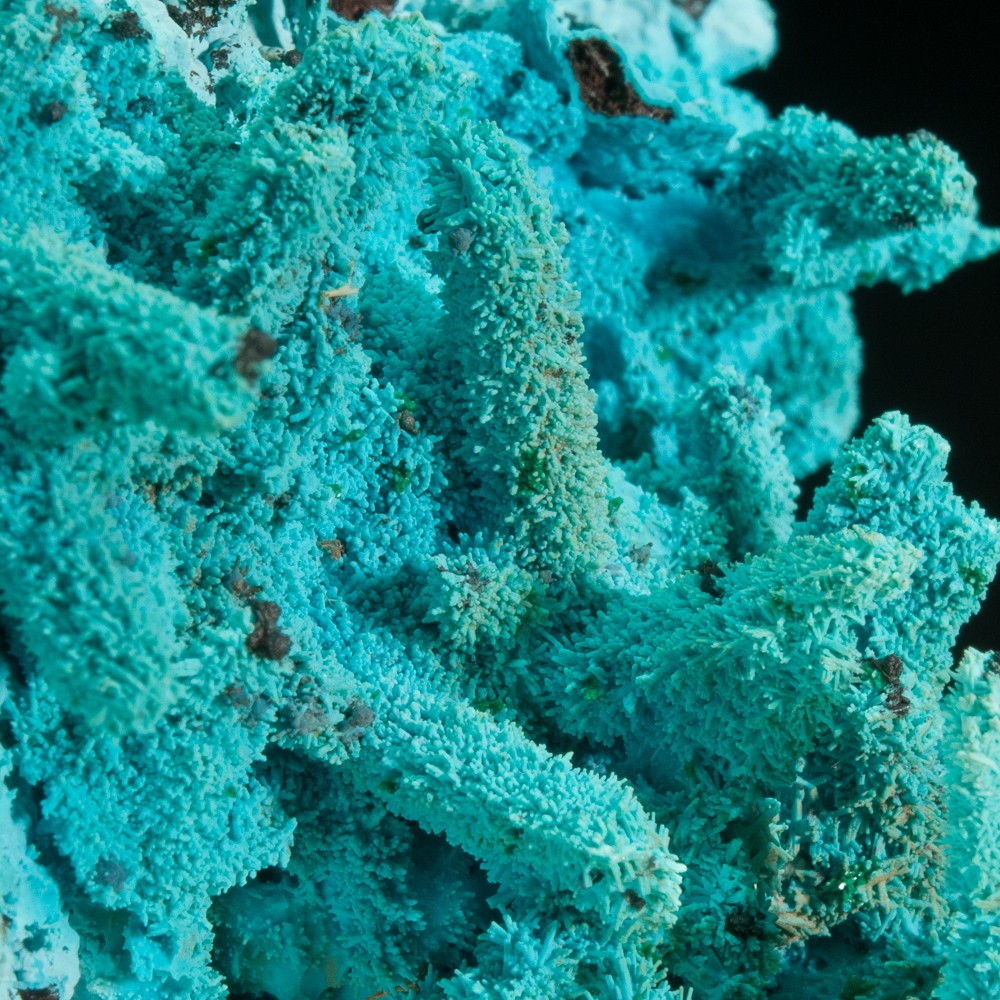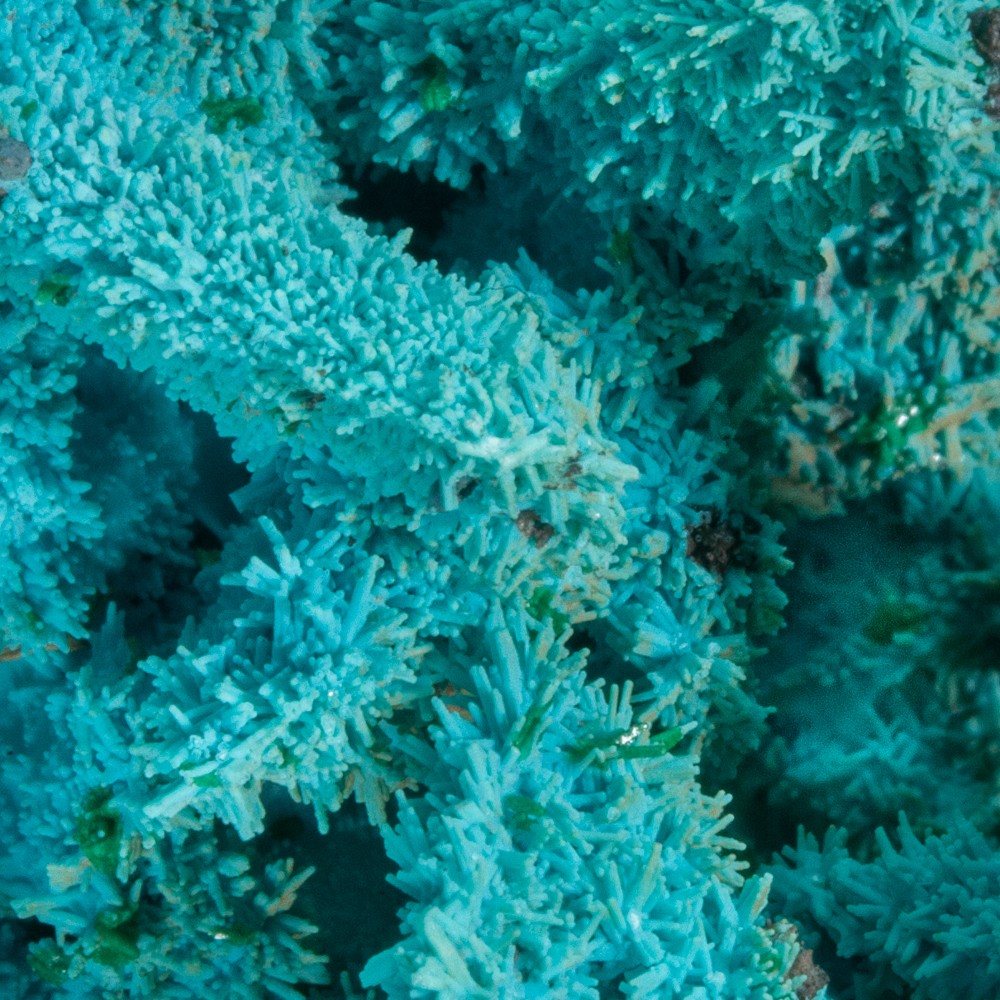Description
Detailed Description
This is a spectacular, colourful cabinet specimen of chrysocolla.
The chrysocolla appears to have formed as pseudomorphs, on underlying malachite pseudomorphs after azurite. As discussed in the full description below, I suspect its formation history is quite complex.
On this large specimen, the underlying form of the original azurite crystals is readily apparent, and the elongated chrysocolla coating them is a superb colour. For its size, this specimen is in excellent condition – there are incomplete pseudomorphs but very few (note, the dark spot in the middle is an odd hollow that seems unrelated and is not damage). It stands perfectly on its own for display in each orientation shown.
A bright splash of colour in the cabinet, and an impressive, unusual specimen.
Definitive identification of these specimens has been confirmed. The specimens from this find have been identified as chrysocolla by way of chemical analysis conducted by Dr. Hexiong Yang of the University of Arizona. A preliminary Raman spectroscopic analysis had led to the suggestion of an ajoite identification (which was posted on mindat), but the Raman for each of these minerals is very similar and was therefore inconclusive.
A couple of observations about these specimens lead me to believe there is some complexity to the formation history. In spots where the underlying pseudomorphs are incomplete, one can examine the cross-sections. Some of those cross-sections reveal that the malachite core is entirely gone (and seems to be chrysocolla), while others retain some malachite. In addition, upon close examination with magnification, one can see there are small malachites sprinkled about, meanwhile the chrysocolla “crystals” have a rather rounded appearance. I believe that the small chrysocolla aggregates themselves are related to the malachite, as pseudomorphs after the malachite. These specimens might in fact be “chrysocolla pseudomorphs after malachite, on chrysocolla pseudomorphs (partial and complete) after malachite pseudomorphs after azurite.” Doesn’t fit on a label so easily, but these are highly unusual and remarkable specimens.

